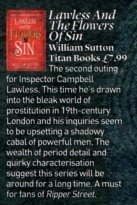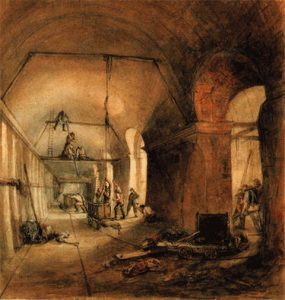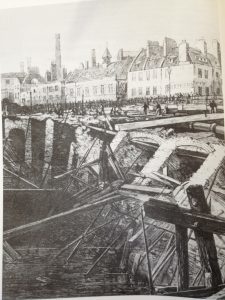William Sutton's Blog, page 13
September 4, 2018
#Aye. Ken it wis like this, Lawless…

The Scottish roots of Lawless apparent, as I visit: Nancy Jardine‘s historical fiction blog: #Aye. Ken it wis like this…
‘He’s assisted in his investigations by a gang of urchins, the Worms of Euston Square. When Alan Massie reviewed the book in The Scotsman, he liked this “gang of waifs and strays who owe something to Conan Doyle’s ‘Baker Street Irregulars’ and perhaps even more to the ‘Gorbals DieHards’ of John Buchan.”’
Thanks for having me, Nancy.
#Aye. Ken it wis like this…with #William Sutton
The Campbell Lawless mysteries are set in the 1860s, based in London, with excursions to the provinces. Lawless is a Scot, escaping his watchmaker’s apprenticeship in Edinburgh. His role as outside is crucial. He casts fresh eyes on this city we think we know, allowing us glimpses behind the smog and slag heaps, inside the hansom cabs and night houses.
The whole series digs beneath the surface of what we know of London. The first novel Lawless and the Devil of Euston Square explores the amazing developments of the 1860s: the Metropolitan underground, the London sewers preventing cholera, new power and communications from the telegraph to pneumatic trains to hydraulic lifts. Intertwined with this high-power technology are stories of love and loyalty, betrayal and loss.
Initially Lawless is naïve, and perhaps too trusting. This makes him appealing and wins him friends, high and low; but he’s vulnerable to manipulation, from above and below until he learns to puzzle behind these darker cogs and machinations. He encounters a series of real-life characters in his investigations: engineer Joseph Bazalgette and Prince Albert, with cameos for Dickens, Marx. And London’s progress is real, with the building of the Metropolitan Line (world’s first underground train), the sewers, and an extraordinary hydraulic power network.
He’s assisted in his investigations by a gang of urchins, the Worms of Euston Square. When Alan Massie reviewed the book in The Scotsman, he liked this “gang of waifs and strays who owe something to Conan Doyle’s ‘Baker Street Irregulars’ and perhaps even more to the ‘Gorbals DieHards’ of John Buchan.”
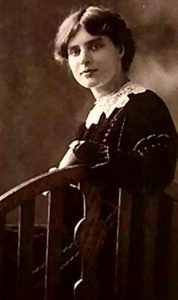
Lawless is also assisted by Miss Ruth Villiers, a feisty librarian at the British Museum. With her self-sufficient lifestyle, outshining the detective in research acumen, her initials are a nod to Wilkie Collins’ Rachel Verinder in The Moonstone.
In Lawless and the Flowers of Sin, they investigate a different kind of underworld. I enjoyed making use of Jon Camden Hotten’s Slang Dictionary. “One of the joys of the novel is the language employed by Worm and his friends, part authentic Victorian slang, part thieves’ cant, and part – I rather think – invented.”
This second book was chosen among both The Mail on Sunday’s and the Morning Star’s Books of the Year 2016.
I also drew on the mysterious Walter’s erotic memoir My Secret Life, exploring a side of Victorian life not usually written about. We whitewash the underbelly of London with cheery images of dancing chimney sweeps and cheerful tarts. But what really happened in the dark outings of Robert Louis Stevenson’s The Strange Case of Dr Jekyll and Mr Hyde? I steal that classic’s extraordinary structure to explore crimes straight out of Operation Yew Tree. The Morning Star said “It’s a marvellous read but be warned — the subject matter is harrowing and the author shows his readers little mercy.”
The latest book, Lawless and the House of Electricity, published in the UK last year (and US paperback imminent), is the most unabashedly historical.
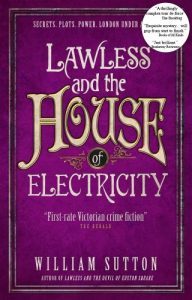
It’s a country house novel, exploring tensions between upstairs and downstairs, between industry and leisure, between public and private lives. We follow the urchin Molly down the rabbit hole of a governess’s job into this new world, hobnobbing with lords and ladies. She falls in love with the children and staff, the house and grounds of Roxbury House (based on Cragside in Northumberland). Yet amidst the pastoral idyll, the Earl conducts mysterious electrical experiments, with consequences both for his international arms company and his grief-stricken family.
Meanwhile, Lawless it at work hunting down the perpetrators of terrorism in industrial heartlands across the country. Who could orchestrate fires, bombs, and crashes so widely, striking at the heart of Britain’s defensive network, while the French are plotting invasion?
To play Lawless on screen? James McAvoy.
Nancy comments:
Thank you for visiting today, William. My very best wishes with the Campbell Lawless series. I’m sure it’ll give the reader an entertaining, and perhaps also challenging, perspective on Victorian London!
(BTW- James McAvoy would be brilliant, I think, and that’s even before I read your series. I could be a little biased, of course, because I’m also a Glaswegian from similar roots!)
More about William Sutton at:
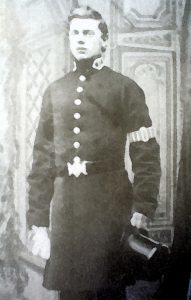
Please Feel Free to Share:









September 1, 2018
ASTHMA CIGARETTES: Electric Blog Tour #1
ASTHMA CIGARETTES: ADVERTISEMENTS AND INSPIRING ILLNESSES
As the US edition of Lawless and the House of Electricity is pushed back, here’s my tour to celebrate a year since the trilogy was out in full.

Here, from lisareadsbooks, my piece on how Victorian advertisements have inspired me and led me into strange corners of neo-Victorian imagination.
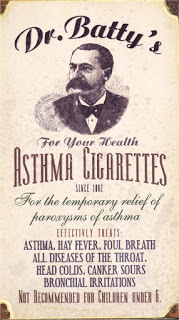 Dr Batty’s Asthma Cigarettes For the temporary relief of paroxysms
Dr Batty’s Asthma Cigarettes For the temporary relief of paroxysms Not recommended for children under 6
Victorian advertisements beguile me. They speak volumes of the age, of its anxieties and its swindlers.
You couldn’t make this stuff up. Well, you could, but the real examples are better. (View more on Pinterest.)
With all our vitamins, homeopathics and aromatherapies, you might think this is the age of dodgy medications, but you wouldn’t believe the things Victorians tried. In writing Lawless & the House of Electricity, I returned over and again to advertisements and other picture inspirations for two strands of the book: terrorism and illness.
VICTORIAN DIAGNOSES
A wonderful range of ailments is purportedly cured by Dr Williams’ Pink Pills for Pale People: “paralysis, locomotor ataxia, anaemia, weakness, scrofula, sundry ailments”. From this I derived diagnoses, more and less reasonable, for Lady Elodie, the mysterious absentee at Roxbury House.
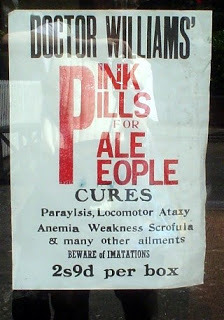
Arsenical Soap was used to treat “disfigurements: blotches, blemishes, freckles, pimples and pustulance”. The fact that it was poisonous caused problems, and suspicious deaths accelerated through the mid-century. The Arsenic Act of 1851 did not stop the panic over poisonings, as seen in ITV’s drama Dark Angel.
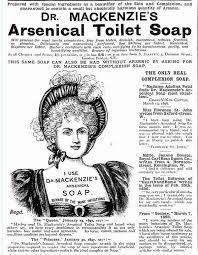
I recommend you read further in Kathryn Harkup’s A is for Arsenic, which gives encyclopaedic detail on the myriad ways you may poison your loved ones (or your characters).
DIABOLICAL DIAGNOSES I got so inspired by all this, I wrote a ditty about it for the Writing Edward King project (hear it on Soundcloud), characterising the wild range of diseases that sent people to those daunting and magnificent asylums that sprung up around the country after the Asylums Act.

I’ll admit that scrofula and pustulance aren’t too common today (at least in Europe, though Dickensian concerns are often still operative in the wider world). But researching hysteria in Asti Hustvedt’s excellent Medical Muses: Hysteria in Nineteenth-Century Paris made me think twice before mocking Victorian medicine.
We may laugh at “strolling congestion, drawing room anguish, dissipation of nerves and imaginary female trouble” (genuine contributory factors cited upon commitment to a Victorian asylum). But if we mock Victorian diagnoses, what will today’s diagnoses look like in future?

Jon Ronson’s The Psychopath Test explodes the alarmingly arbitrary origins of today’s diagnostic criteria (psychologists using DSM, Diagnostic and Statistical Manual of Mental Disorders). Perhaps we should think how today’s diagnoses will be laughed at in the future.
I resisted classifying Lady’s Elodie’s disease by modern criteria (depression, epileptic absences, fugues). It has more in common with the encephalitis lethargica of Oliver Sacks’ Awakenings and the catalepsy-lethargy-somnambulism of Charcot’s hysterics in the Saltpêtrière Hospital of Paris.
The pictures remind us that the past was once the present: laugh if you dare, but you will be laughed at in turn one day.
TOP VICTORIAN PIC SOURCES
Follow these stars of Twitter and the blogosphere and the world of Victorian pics will open up:
My pictorial inspirations on Pinterest British Library’s Open Source archive Whores of Yore (Kate Lister @WhoresofYore). See especially her Word of the Day and Historical Hotties Victorian London (Lee Jackson @VictorianLondon) Wayward Women (Lucy Williams @19thC_Offenders) Spitalfield’s Life (@TheGentleAuthor) Bizarre Victoria (@BizarreVictoria) Watts Gallery
Electric Blog Tour Day 1 (Tags: writing, Vic Pics, diagnoses, ads, inspiration, asylum, madness)
Please Feel Free to Share:









August 30, 2018
Electricity Launches
A year ago, we launched my Titan Books third mystery, Lawless & the House of Electricity, a tale of love, loss, hysteria and Europhobic terrorism.
I could not have had more support.
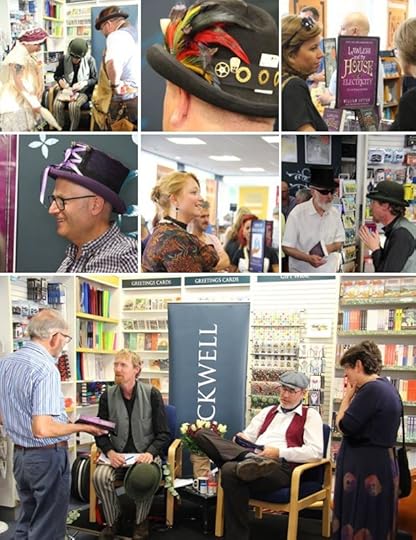
Thanks to Portsmouth partners in crime Joanna West of Blackwell’s in Portsmouth; Diana Bretherick, interviewer supreme; Jamie West, musical maestro; Anthony J Duke of Head Case Curios for costumery and gadgetry; Stuart Markham & Heather of @Gosport Steampunk Society for adding that steampunk flair; Caroline Sutton for biscuitry; Lucy Prosser for fine photography;and so many friends from Portsmouth Writers Hub, with Charlotte Comley‘s Lawless mug a special gift.
Thanks too to Forbidden Planet magicians, Lou Ryrie & her team; to John Sutton and Christine Harris-Smyth, Victorian cocktail mixers sublime (oh, those sloe gin fizzes); to my astonishing acting cast of , Dallas Campbell and ; and to Roddy for supporting my musical meanderings; to writer friends, cricket friends, actor friends, school friends, and many more for supporting the event. Hugely enjoyable.
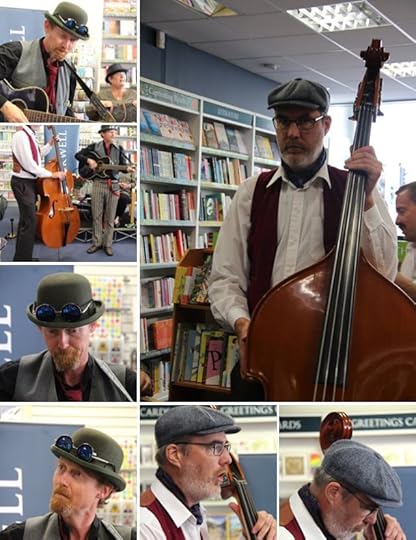
After a chat with my agent yesterday, I shall be floating another Lawless idea to my publishers.
Readers, thanks for your comments and observations, which always make the characters come back to life.
Here be photos of the day on Facebook and on Flickr.

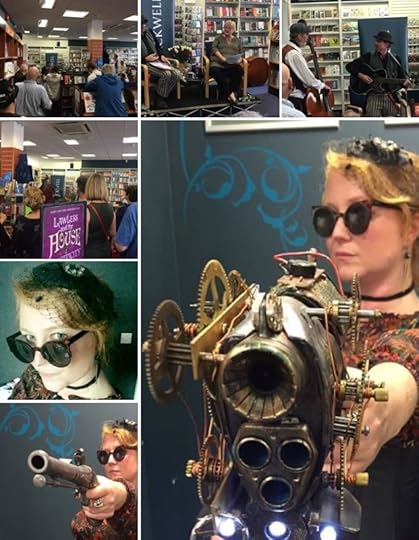
Please Feel Free to Share:









August 29, 2018
Asylum Steampunk: Going Global
Thanks to Asylum Steampunk, Lincoln, and Dr Karl Bell’s Supernatural Cities for a splendid event of provocations and cultural nuances.
I gave a talk expanded from the research for my first novel. A Tale of Three Tunnels: Biology of the Metropolis and Victori-bethan Anxiety. I sketched the wild histories of Metropolitan Line, Bazalgette’s sewers, and London Hydraulic Power Company. In admiring the Victorians’ ambition, overcoming blocks and bursts that we forget in our retelling, I noted how we lampoon, belittle and malign their era.
Perhaps, I suggest, we are anxious that their era overshadows ours so completely that we will only be remembered as a footnote to the Victorian age, our technology parasitic on theirs, our visions shaped by theirs.

 Speakers from the conference: extra plaudits for Karl Bell’s prosthetic arm
Speakers from the conference: extra plaudits for Karl Bell’s prosthetic armAs conference organiser, Dr Karl Bell declared:
“Excellent papers & panels @ ‘Going Global: #Steampunk & Transnational Cultures’ conference #AsylumX. Huge thanks to @yoms @tinyhippo1979 @EsserHelena @ClockworkHeart @EilisPhillips @WilliamGeorgeQ @skuldugger @VanVeda Alex Anthony-Lewczuk, Catherine Redpath, @AsylumSteampunk“

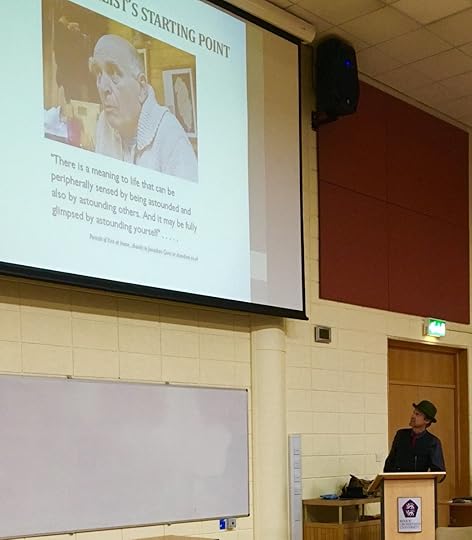

Please Feel Free to Share:









August 10, 2018
Talking Tapes

Findaway Voices ask, “Are you wondering what it is like to create an audiobook start to finish with Findaway Voices? The Creative Penn published this awesome blog, written by Julia How from The Witcherley Book Company, that tells all: Producing An Audiobook With Findaway Voices”

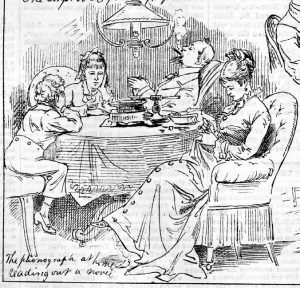
More research: 13 AWESOME AUDIOBOOKS READ BY ACTORS from Book Riot‘s Susie Rodarme.


The Poetry Archive, Benjamin Zephaniah:
Benjamin Zephaniah reads on the Poetry Archive

reading his seminal book:
 The Man Who Mistook His Wife for a Hat
The Man Who Mistook His Wife for a HatJack Kerouac reading from On the Road:
Chester Himes read by Samuel L. Jackson
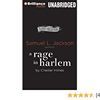
A Rage in Harlem (Classic Collection (Brilliance Audio))
Nora Ephron‘s novel Heartburn, read by Meryl Streep
And a few more goodies: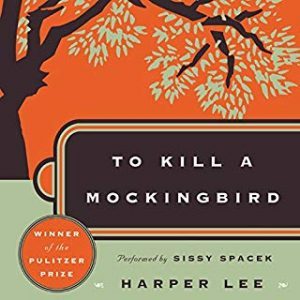
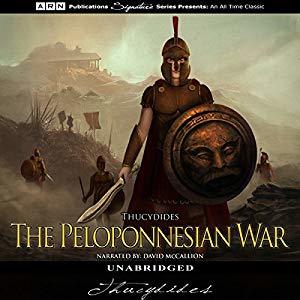
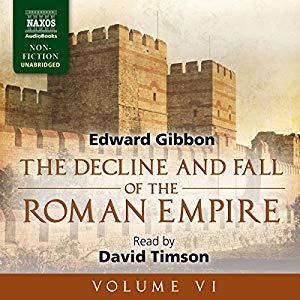
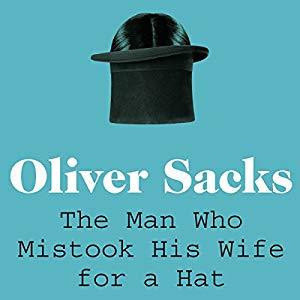

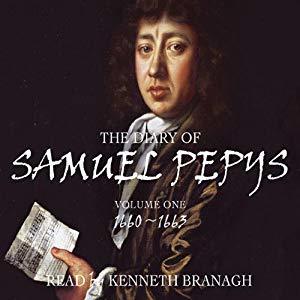
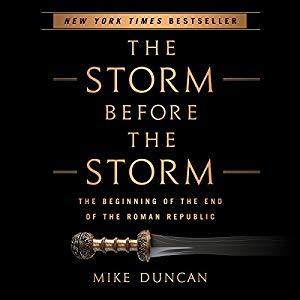

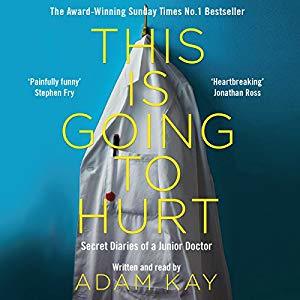
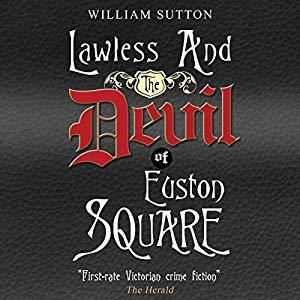


Please Feel Free to Share:









July 25, 2018
Tale of Three Tunnels at Asylum Steampunk Festival
The Asylum Steampunk Festival is the largest and longest running steampunk festival in the Solar System, attracting participants from around the globe. It takes place over the August Bank Holiday weekend in the historic City of Lincoln.

For four glorious days the historic streets of Lincoln are thronged with thousands of splendidly dressed steampunks enjoying a festival which strives to combine art, literature, music, fashion, comedy and simple good fun.
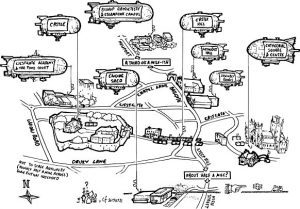
“I had to read your novel again, when I realised it was real.”

I’ll be delivering my first ever academic paper in the associated symposium run by Supernatural Cities at the Bishop Grosseteste University campus. I’ll be telling A Tale of Three Tunnels: Biology of the Metropolis & Victori-bethan Anxiety.
Going Global: Steampunk and Transnational Cultures
25th August 2018, The Asylum Steampunk Festival Conference, Bishop Grosseteste University, Lincoln
Keynote Speaker: Yomi Ayeni – Transmedia Author, Producer, and Filmmaker
“I had to read your novel again, when I realised it was real.”
I’ll be speaking about Victorian London as an organism, evolving from the primordial ooze to seek dominance. My Lawless novels will be mentioned, but I’ll talk more about the hydraulic network and sewerage system, the slang and other othernesses beneath the gleaming surface, the city’s globality and insularity.
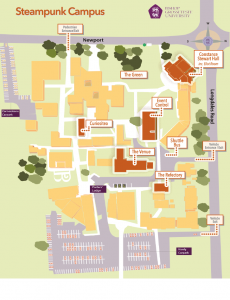
This year’s steampunk conference at the Asylum Festival. To celebrate a decade of Europe’s largest steampunk festival, we will be focussing on steampunk on the global scale.
Since the creation of the Asylum Festival, steampunk has grown in popularity, expanding from its initial literary forms and subcultural communities to infiltrate and inform many areas of popular culture and mass media. As it has been adopted and adapted around the world, so it has started to shift away from its Anglocentric, (neo-)Victorian roots. This has led to the rise of vibrant and diverse steampunk cultures and communities across the globe. This conference will explore the nature of what has become a worldwide phenomenon. It will reflect on the factors that have encouraged steampunk’s global development, and examine the ways in which steampunk has been appropriated and inflected by countries and cultures across the planet.
Each August Lincoln (UK) becomes the temporary capital of European steampunk culture. This is your opportunity to join us in a celebration of steampunk, to share papers and exchange ideas, and to participate in lively cross-disciplinary discussion.
Please Feel Free to Share:









July 23, 2018
Why Historical Fiction?
“In my Edwardian novels, I was also escaping the fluorescent light which bleaches out our world.”
Thanks to Historia Magazine (The Historical Writers’ Association) for this excellent article by Andrew Martin, exploring the seductions of historical writing: historiamag.com/why-historical-fiction. It’s a question we all ask ourselves. I particularly enjoyed the texture of this account, and recognise the lure of the dim lit nook and the obscure interstice.
“I particularly enjoy firelight and candlelight. There’s always a candle by my bed, and a major reason for my setting a novel in the 18th Century, was to describe the effects of candlelight. The novel, Soot, is about the murder of a silhouette painter, and the world evoked is monochromatic with snow on the ground and shadows looming.”
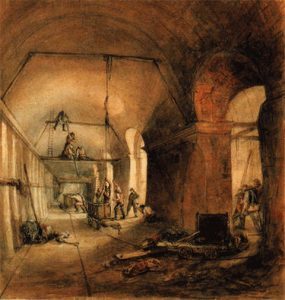

Please Feel Free to Share:









July 19, 2018
How crime fiction murdered its competition
“The sleepy Yorkshire spa town of Harrogate was once renowned for its tea shops, long moorland walks and Conservative Party conferences but, for the past 16 years, it’s more likely to evoke murder and mayhem as the world’s top crime writers gather there for the annual Theakston’s Old Peculier Crime Writing Festival (July 19-22).”
Stav Sherez explains to the Spectator How crime fiction murdered its competition, telling how this month’s Theakston Old Peculier Crime Writing Festival celebrates a genre that is outselling its literary rivals.
Please Feel Free to Share:









July 16, 2018
CrimeFest 3 – Life Without the Dull Bits
Top moments from CrimeFest 2018 panels.
Life With The Dull Bits Cut Out
Tom Harper
Olivia Kiernan
Stephanie Marland (aka Crime Thriller Girl)
Chris McGeorge
Moderator: Kevin Wignall
I love a panel where there are a few unexpected questions or quirky moments. With Kevin Wignall moderating, in his inimitable sunglasses, this is guaranteed. He kept it light, promising to throw in questions borrowed from readings he gives to teenagers.

On musical inspirations:
“I wrote it playing Simply Red in the background. Because that says, ‘Murder,’ right?” Stephanie Marland
On research:
“Some of the audience will know about the Silk Road, and a program called Tor that reroutes your IP address. Warning: this may be triggering.” Olivia Kiernan (goes on to talk about discovering the strange online world of those who obsessively know what it is like to die, for example to be stabbed)
On origins:
“Lost Cities of Gold, a TV series in the 1980s. I never saw the end of the series. This book is filling the gap.” Tom Harper
KW: “Have you met Harry Stiles?”
On geography:
“My next book is set in the Amazon. I haven’t been to Kew Gardens.” Kevin Wignall
KW: “Would you rather have penguin legs or kangaroo arms?”
On inspiration:
KW to CG: “We need to talk about your main character: a sociopath, on the spectrum, condescending, superior. Based on you?”
Advice for writers:
“Write the slow bits fast and the fast bits slow.”
“Keep it lean.”

“Try to be economical.”
“Always remember you’re telling a story.”
See you at next year’s CrimeFest.

Please Feel Free to Share:









CrimeFest #2 – Financial Crime
Top moments from CrimeFest 2018 panels.
Follow The Money: Financial Crime panel held particular fascination. Not only do I know Quentin, the moderator, and I’d enjoyed meeting Swiss author Peter Beck the previous evening, but I’m also writing about London’s financial scandals of the 1860s (a match for 2008). I even had the chance to ask Michael Ridpath, who knows both crime writing and finance, about some specifics.
How do you make banking sexy? The panellists showed admirable wit and ingenuity in explaining how they’d each tackled the problem that we’re all fascinated by the dirt and duplicity of banking, but we don’t actually want to do the sums.
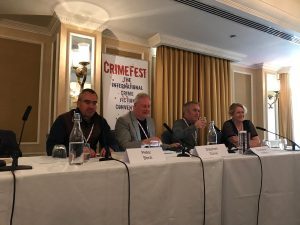
Besides Quentin Bates, this panel showcased off the talents of Stephen Davis, Lilja Sigurðardóttir, Christopher Wakling and Peter Beck.
On spreadsheets:
“There’s nothing sexy about a spreadsheet.” Quentin Bates
On fraud: ”
“I’ve worked on fraud – it’s deadly dull. Financial crime, though, is sexy.” Chris Wakling
On national service:
“The cycling unit of the Swiss army goes downhill, carrying rockets. There are maybe 30 cyclists. So you try not to be first.”
On sex scenes:
“I was told, men can write sex. They just can’t do it. Two paragraphs – it’s not enough.” Stephen Davis
On conflict:
“When people are in a corner, this is interesting.” Lilja Sigurðardóttir
The panel concurred that out-and-out evil characters were of less interest to them than realistic people trapped in intractable situations.

See you at next year’s CrimeFest.

Please Feel Free to Share:










